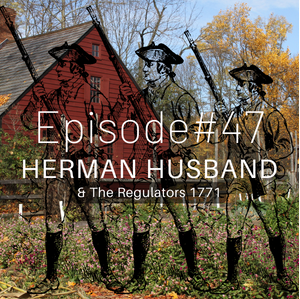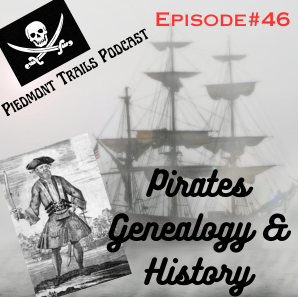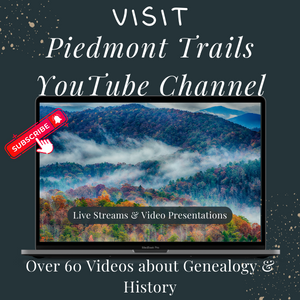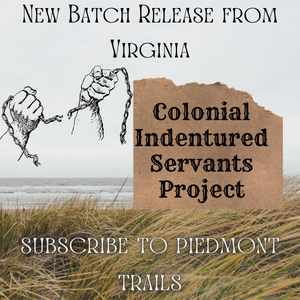The great migration in North Carolina’s history occurred throughout the mid 18th century. During the 1740 decade, hundreds of families from middle and northern colonies traveled to the piedmont region of North Carolina and other points south. By 1750, many religious groups were embarking on the same adventure as long-line caravans began to dot the landscape consisting of church member congregations. The Moravians were one such group, migrating during the year 1752.2 The rules were simple, first, locate the Lord Granville tract. Second, choose land that is free from others. Third, apply for a land warrant at the Granville land office. The office first opened in 1748 and, each warrant applicant was assigned a surveyor to measure the land and provide a plat map or a sketch. The completed warrant documents are stored and filed at the land office. One hundred acres was the usual scale to heads of families. The North Carolina Royal Governor could sell tracts of land no more than 630 acres per transaction. Land agents recruited for the assignment advertised what parcels of land were available and where.
One crucial fact about the Moravians before arriving in North Carolina is that the British Parliament proclaimed the group as a Protestant Episcopal Church within all British colony boundaries. The proclamation occurring in 1749 allowed the Moravians to exercise their rights for religious freedom.3 The document further states that any member of the Unitas Fratrum assigned military duty for the British armed forces and requesting discharge from such duty could do so by paying a tax rate set at the requested time. A formal letter or certificate would also be needed to be written by a bishop or pastor proving church membership. This fact will be meaningful during the days of the French and Indian War and the American Revolution.

The land warrants filed for the Moravians numbered 17 and were all issued on August 7th, 1753, to James Hutton, a London resident amounting to 73,765 acres.1 Immediately following the land grants, the Moravians initiated a “land company.” This action would provide hope to enable the fees to be paid on time and provide monies for expenses contributed by the new proposed settlements. Francis Corbin, an agent of Lord Granville, strictly informed the Moravians that lands with living persons already established were not available for selection. William Churton, a surveyor of Edenton, accompanied the Moravian group of men to help choose the right parcel of properties. The surveying fees were separate from the filing fees for land applications. From various letter sources, it appears that Churton was paid £60 for his labor and expertise during this expedition.
There are many more details concerning the Moravian Land Deal of North Carolina. An upcoming podcast by Piedmont Trails will elaborate further on this topic. The show will air by March 11th, 2021. Episode #21 will discuss in detail the Moravian goals and how these decisions affected the people of North Carolina. If you are researching families who have ties to the early settlements such as Bethabara, Bethania, and “the mill area,” you will not want to miss this show.
The Moravian Archives Southern Province provides a vast amount of historical and genealogical material dating to 1752. When combining these records with other local documents from the period, a new sense of understanding emerges. The facts allow the voices from the past to surface to the present. At this point, we began to realize the motives and goals associated with the Moravians and their early settlements. Years later, the Moravian lands totaled nearly 94,000 acres covering the piedmont region of North Carolina. Churton surveyed an additional five parcels after Bishop August Gottlieb Spangenberg returned to Pennsylvania in the early months of 1753. These new additions compensated Moravian’s original grant that resulted from complaints within the group stating the land was of insufficient quality.
You may have questions about the Moravian land company or, you may have ties directly linking your ancestors to the early settlements. You may have questions about an early land grant and why records do not reflect what happened to the land title or your ancestor. You may have relatives living in one of the early Moravian settlements only to discover them somewhere else years later. What were the reasons for their departure and, did they join another church in the area? You may have questions leading to the reasons why the Moravians were allowed to apply for such a large amount of land in North Carolina. The 18th century is a fascinating period to investigate and research. Gratitude and appreciation are expressed for the citizens of this period. The diaries, personal letters, and more enable us to learn and strive forward with our family histories. Join the journey as we continue this discussion with episode#21 on the Piedmont Trails podcast show.
Sources:
- Churton, William, Surveys of North Carolina, 1752-consisting of seven surveys by Churton during 1752.
- Fries, Adelaide, “Records of The Moravians Volume I-Edwards & Broughton Printing Company, Raleigh, North Carolina-1922 pp. 23-28, 30-65, 68, 70 and 73.
- Reichel, Theodore Leon, “The Moravians In North Carolina: An Authentic History”-J.P, Lippincott & Co. Philadelphia, Pennsylvania 1857 pp. 11, 14, 24 and 33.
Categories: Featured Articles, North Carolina











On 6 Jun 1755, Claude Nisbet, a London merchant, received 11 land grants of 640 acres each from Lord Granville along the western border of the Wachovia tract (west side of the north branch of Muddy Creek). Claude Nisbet died in 1761 having never visited the British Colonies in North America.
These grants were significant as the total land area granted to Claud Nisbet was about 9.5% of the size of the 73,765 acres granted to James Hutton and they controlled the west side of the Muddy Creek watershed. Claude Nisbet had ties to the Moravian church in England, but there is no indication he had any interest in moving to British North America. His interest in the land may have been purely speculation.
I have been researching Mr. Nisbet and his relationships in the UK with Lord Granville, James Hutton, and Charles Metcalf as well as the Moravian communities in London and Fulneck. He was also involved with Henry Van Vleck, a New York merchant and Moravian agent for the Moravian community in Bethlehem. Mr. Churton did some of the survey work for Claude Nisbet.
Volume 40 of the Journal of Early Southern Decorative Arts, published by the Museum of Early Decorative arts in Old Salem, includes an article by Michael Hartley about Andreas Hoger and the first maps of Wachovia. Hoger’s 1754 map clearly shows the eleven Claude Nisbet land grants bordering Wachovia. The NC State Archives has copies of only 3 of the 11 Nisbet Granville grants.
I plan to publish my research in the near future.
LikeLiked by 1 person
Yes, this is such a fascinating history with the lands of North Carolina. Hoger’s maps speak volumes into the history of the area and I can’t tell you how many hours I’ve studied them. Also, Churton’s survery maps add the flavor to the area upon the visitation of Spangenberg and comrades. The relationships between these individuals and Corbin have only scratched the surface. I would love to hear more about your research.
LikeLike
Adelaide Fries was the roommate of my old Science teacher, Miss Flossie Martin, at Salem College many years ago. There are a lot of her writings at our library!! Her family has a highway marker between here and Winston.
LikeLiked by 1 person
That’s wonderful to know !! Thanks for sharing this Linda !!
LikeLike